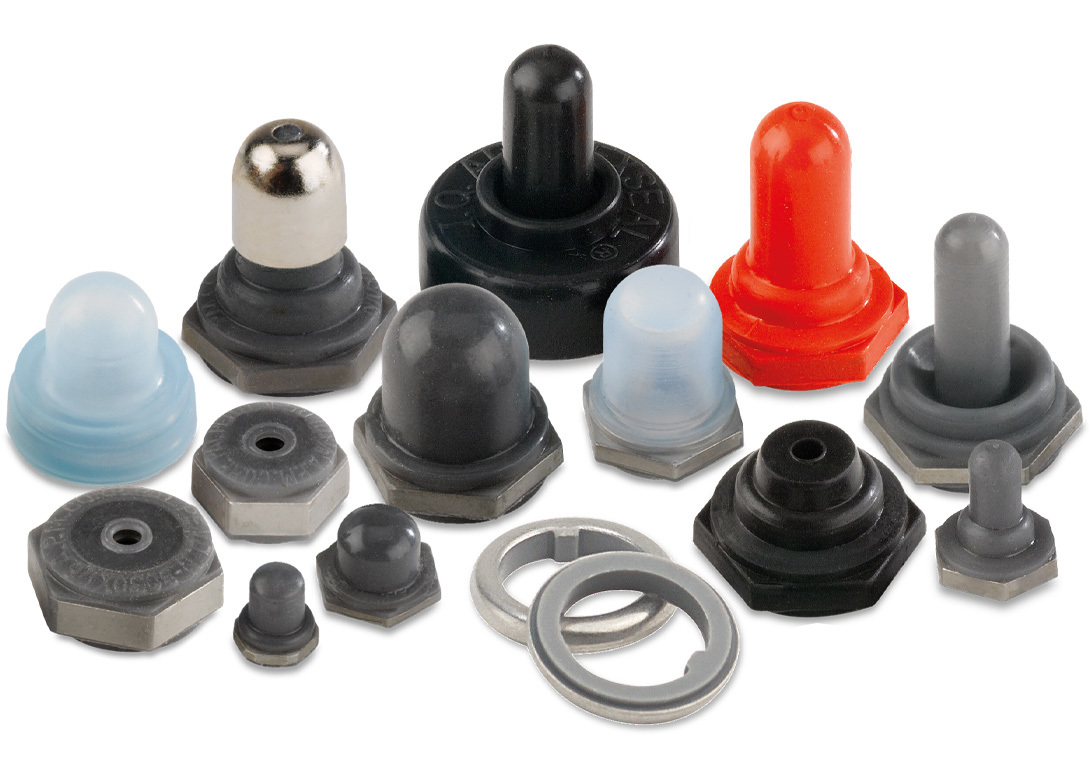
In this article APM Hexseal outlines different ways users can evaluate elastomers for their capacity to perform well in applications using sealing boots and fasteners, as well as highlighting some of the best uses of each different type of elastomer.
Elastomers are the key to providing effective sealing solutions for applications in outdoor, marine, medical or any other environment where sealing items ‘in’ or ‘out’ is imperative. They are versatile materials typically composed of polymers, with manufacturers liking them for their ability to bend and stretch in a variety of ways before returning to their original shape.
However, not all elastomers are the same. Elastomers can incorporate a wide range of designs and materials depending on the needs of their intended application. More than 20 different types of standard elastomers exist and each possesses unique functions in both process equipment and finished products.
Different elastomer formulations affect the physical properties, functions and service life of components and systems. Therefore, it’s essential to test a few different elastomers to determine the best one for individual needs.
How to select an elastomer
When somebody is trying to determine the best kind of elastomer to use for their sealing or fastening application, they need to think about where and how the sealing or fasteners will be used, as elastomers can be used in applications in a variety of environments, including outdoor, marine, industrial/manufacturing, drilling and downhole, food and beverage, aerospace, construction and medical.
The user also needs to think about the kind of contaminants the sealing boots or fasteners will come into contact with, whether it be water, dust, dirt or even grease. The reason is that different elastomers hold up better against specific environmental conditions or contaminants.
Other questions the users need to ask themselves – will the sealing boots or fasteners experience extreme temperatures or wide temperature fluctuations? Is it a high vibration application? Will the equipment be subjected to very high or very low pressure? Will the elastomer be exposed to sharp objects or coarse surfaces or need to withstand a high number of actuations or repeated human contact? And finally what is the budget compared with the cost of failure?
Additional elastomer properties to consider
Even though many differences exist between the types of elastomers on the market, they all bring unique advantages to injection moulding processes and products. The injection moulding process forces rubber compounds into a mould using high pressure. Elastomers perform well in this type of environment because they’re made of similar materials as those used in injection moulding.
Compression moulding is another area that benefits from the use of elastomers. The compression moulding process takes high viscosity compounds and processes them into a pre-form. It then compresses the pre-form into a mould before curing it.
This means that elastomers work well in a variety of hostile environments, such as extreme temperatures, variations in pressure, vibration, corrosive oils and chemicals, food and beverage applications, road salt distribution, dirt, dust and sand, water, as well as extreme weather.
Top quality elastomer sealing solutions
Building quality sealing boots or fasteners involves accounting for many variables. Thanks to its years of experience in the elastomer design process, APM Hexseal is able to help customers across the globe find ways to get the most from their elastomer options.
“We’ve compiled our extensive experience from working with elastomers into our eBook: ‘Elastomer Shlastomer, Right?’, which is available for download on our website,” states APM. “If you would like to learn more about our full selection of products and services, contact us today and ask for one of our experts.”
apmhexseal.com

Will joined Fastener + Fixing Magazine in 2007 and over the last 15 years has experienced every facet of the fastener sector - interviewing key figures within the industry and visiting leading companies and exhibitions around the globe.
Will manages the content strategy across all platforms and is the guardian for the high editorial standards that the Magazine is renowned.
Don't have an account? Sign Up
Signing up to Fastener + Fixing Magazine enables you to manage your account details.